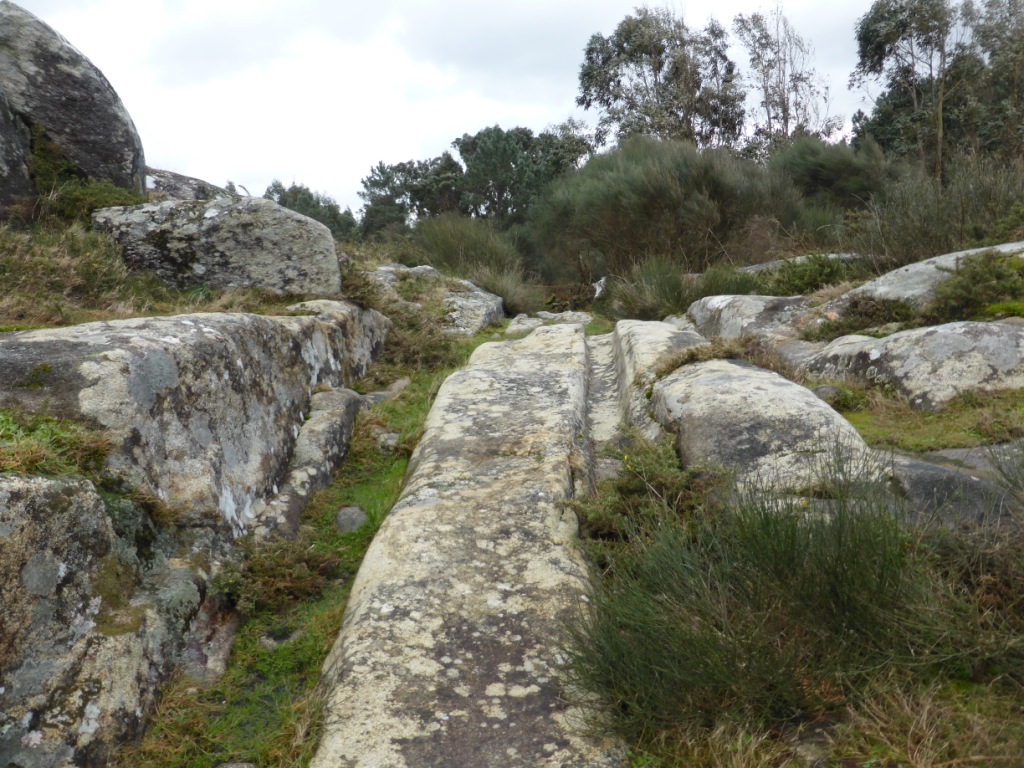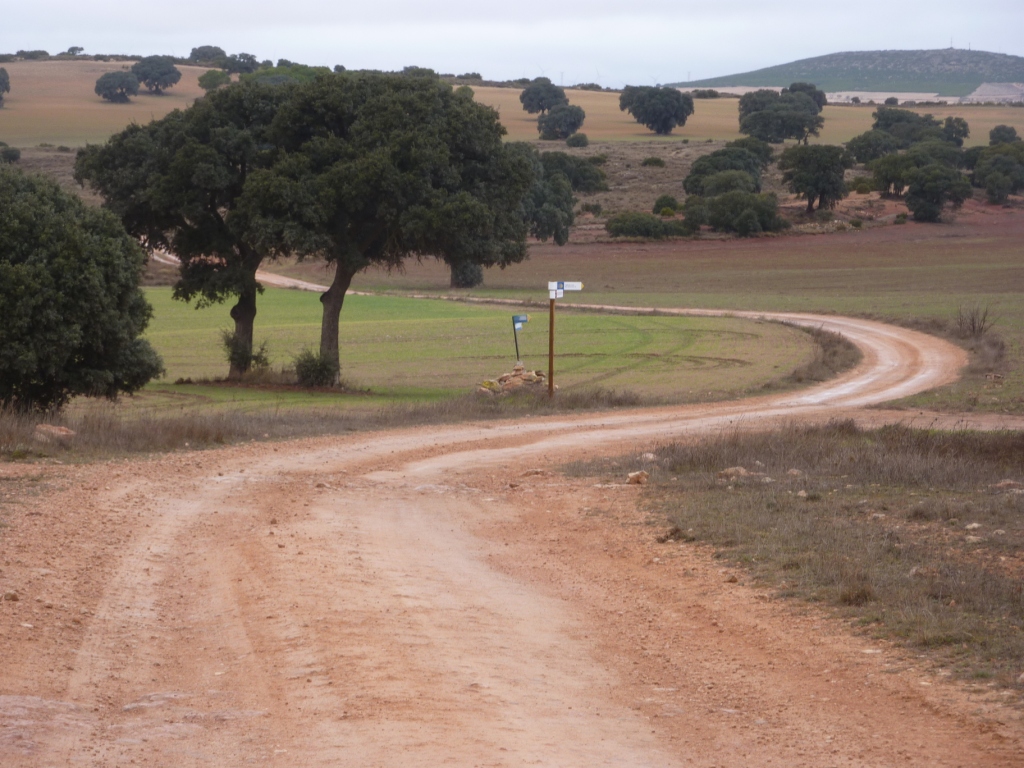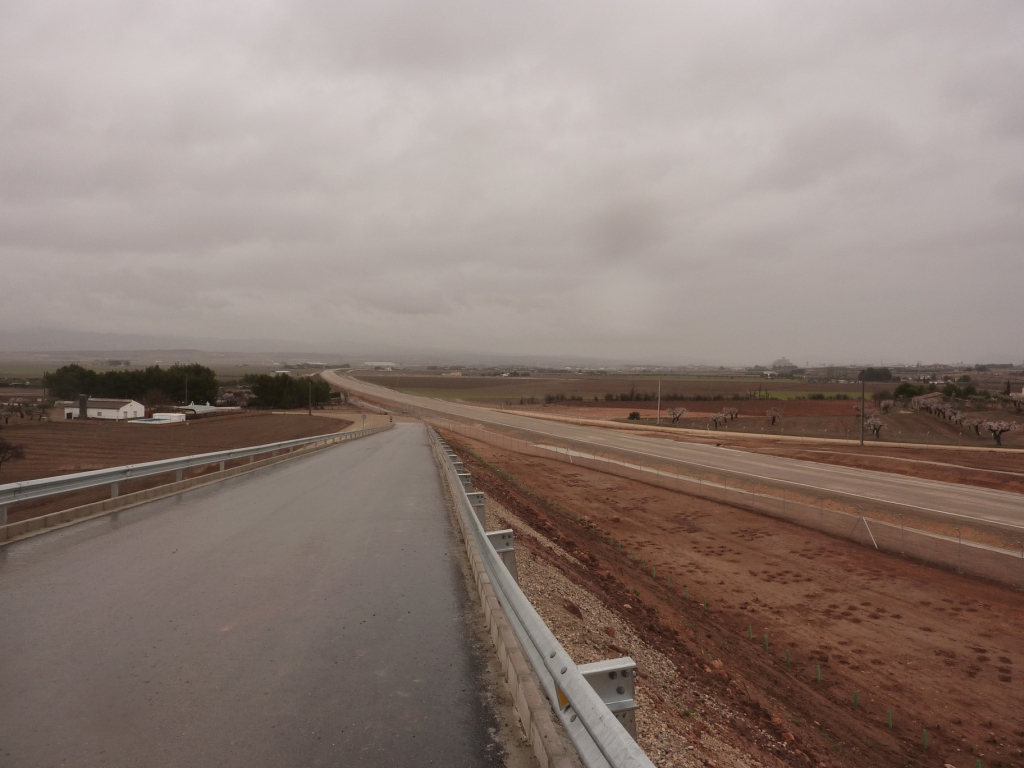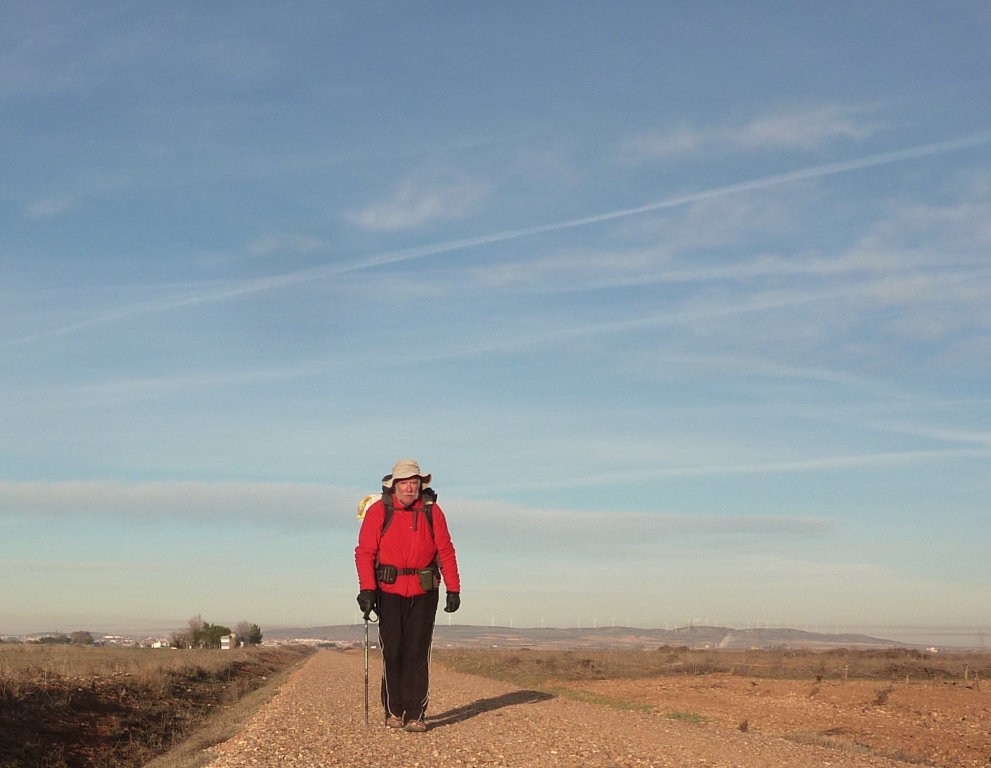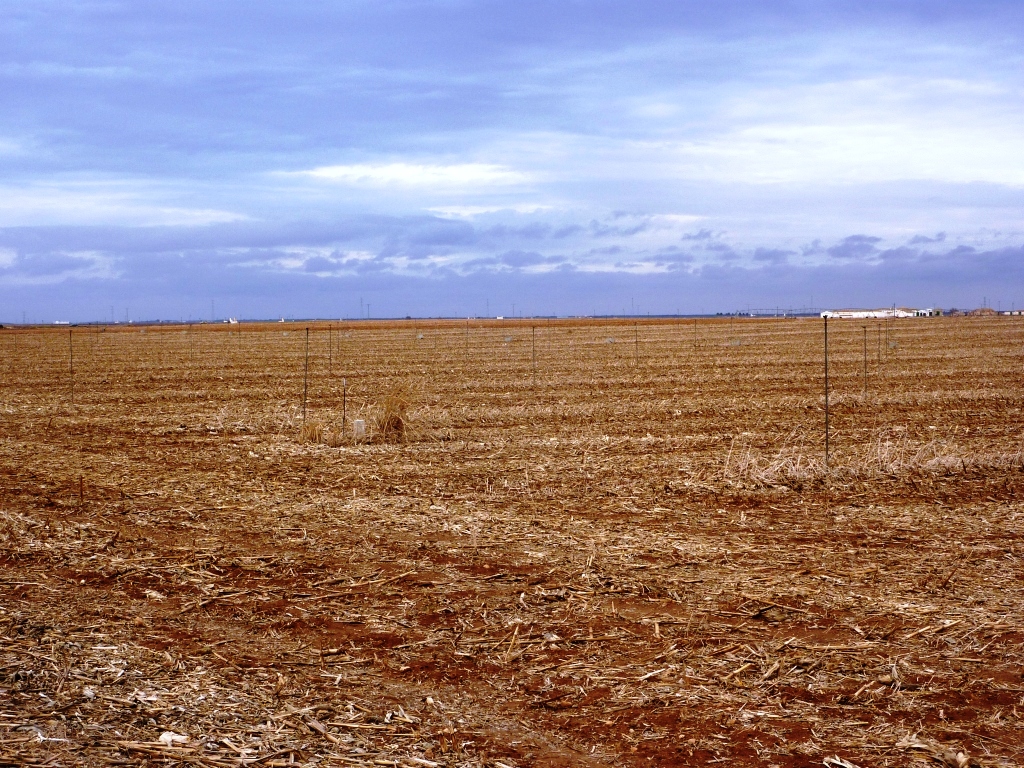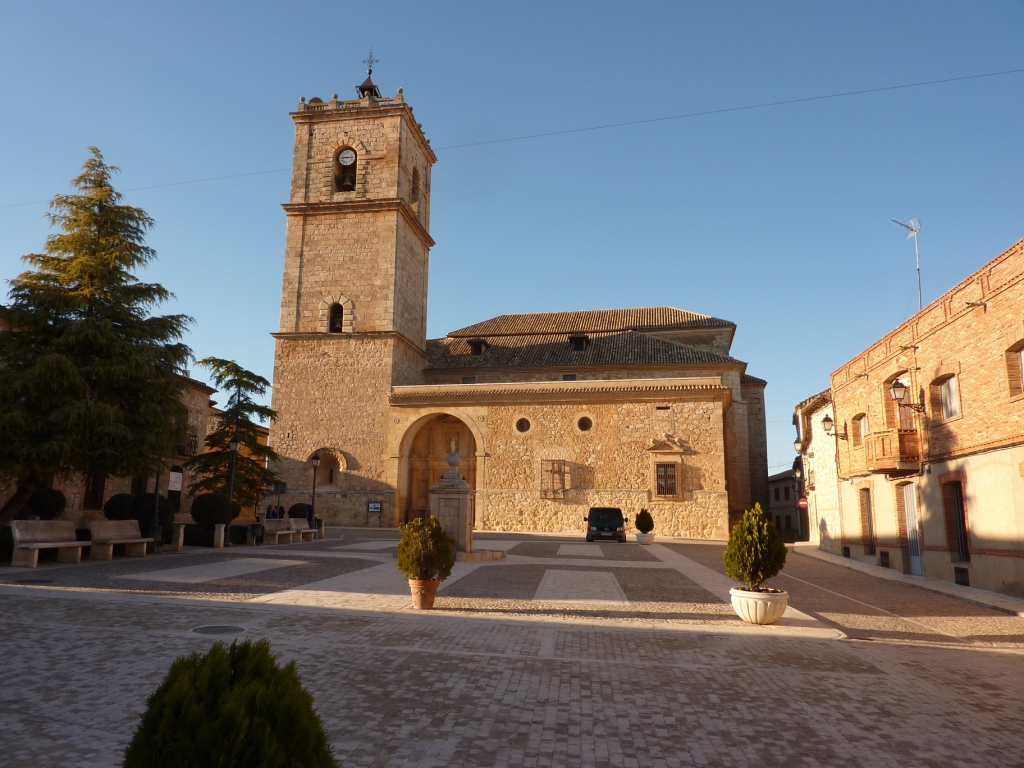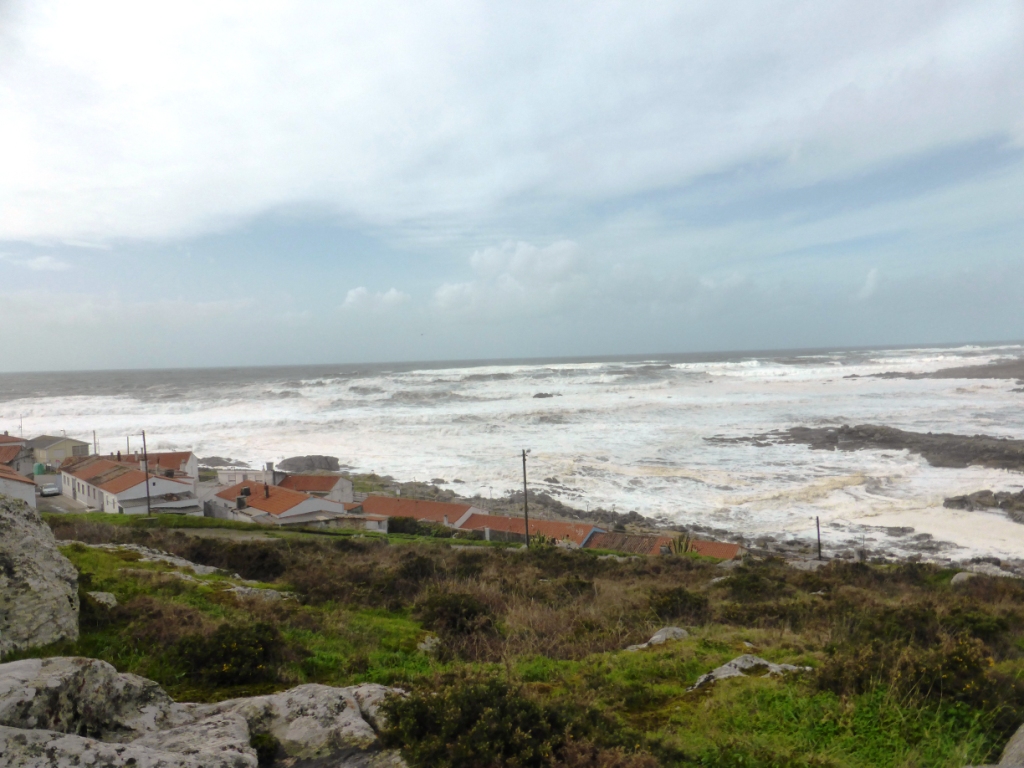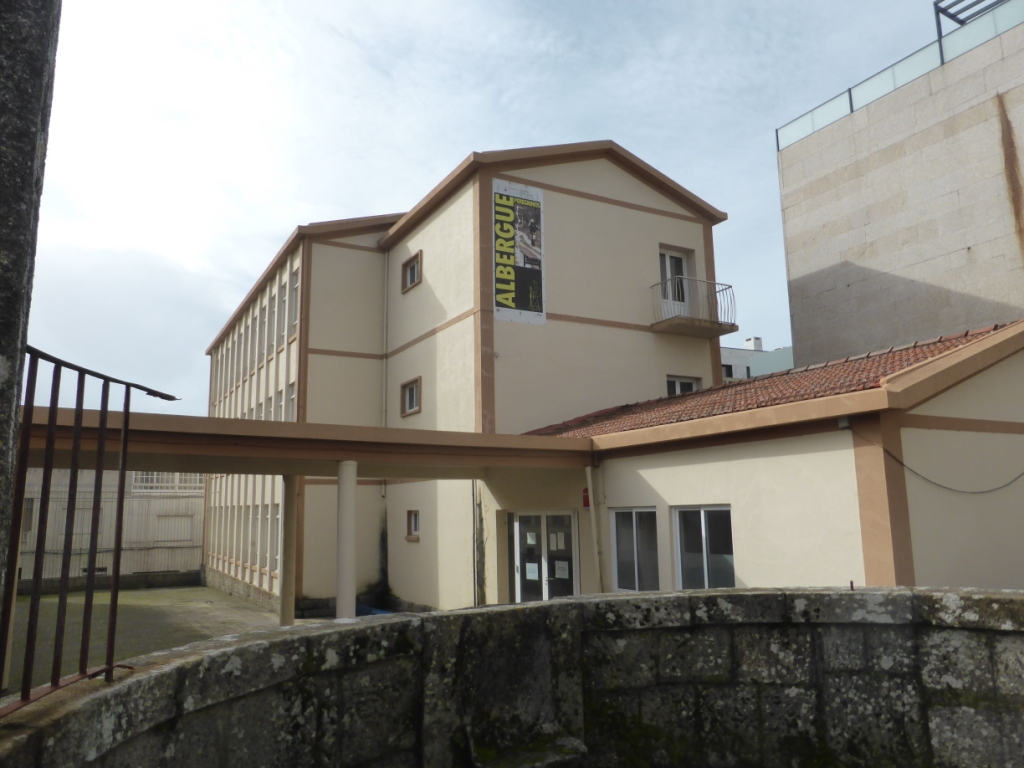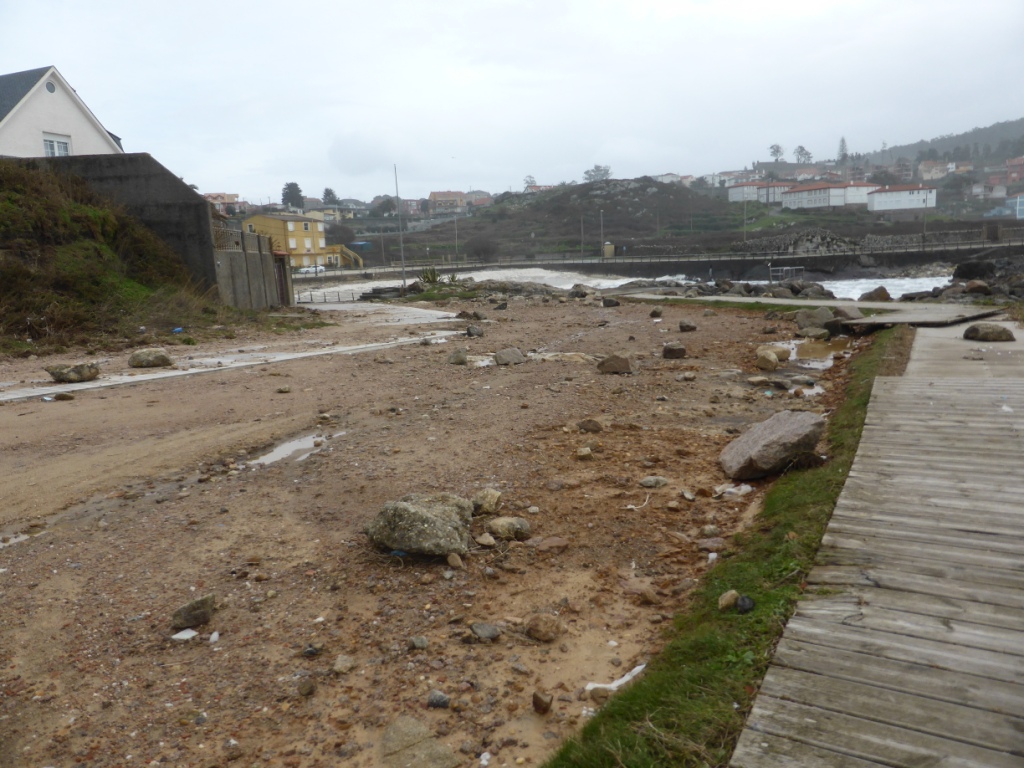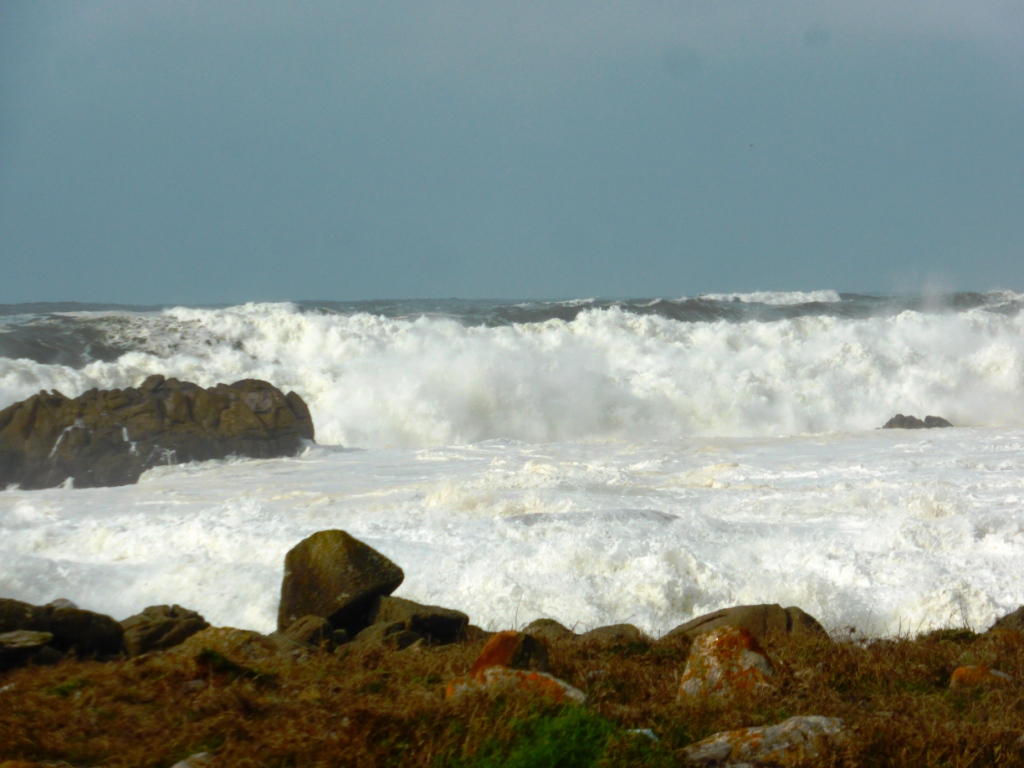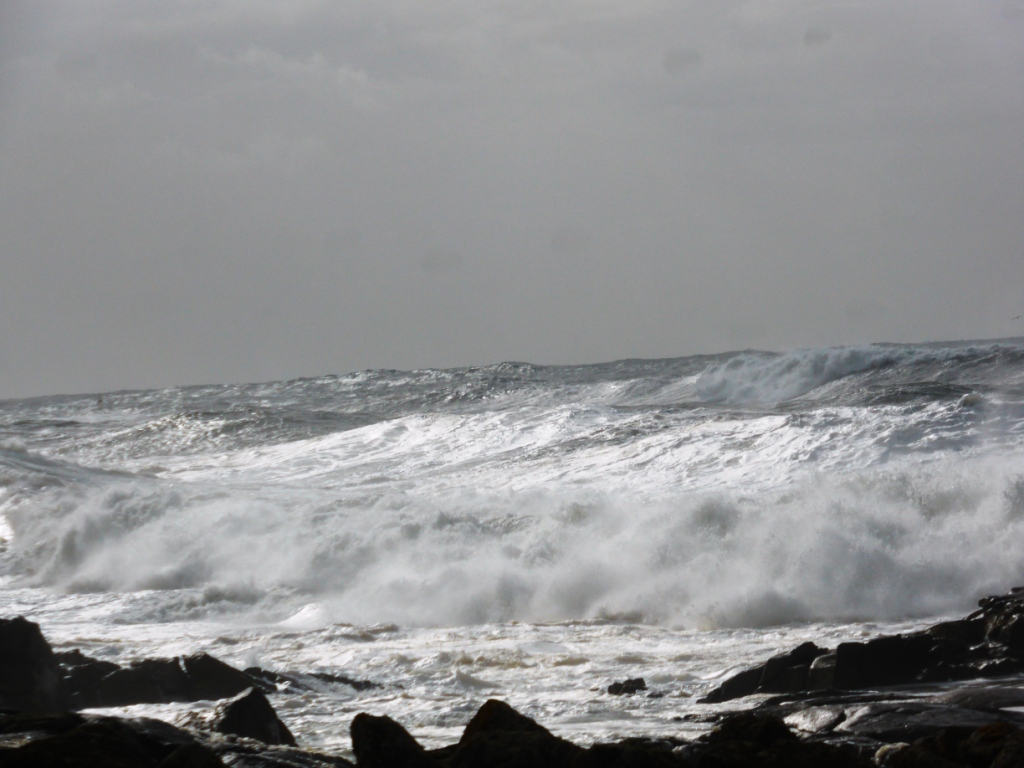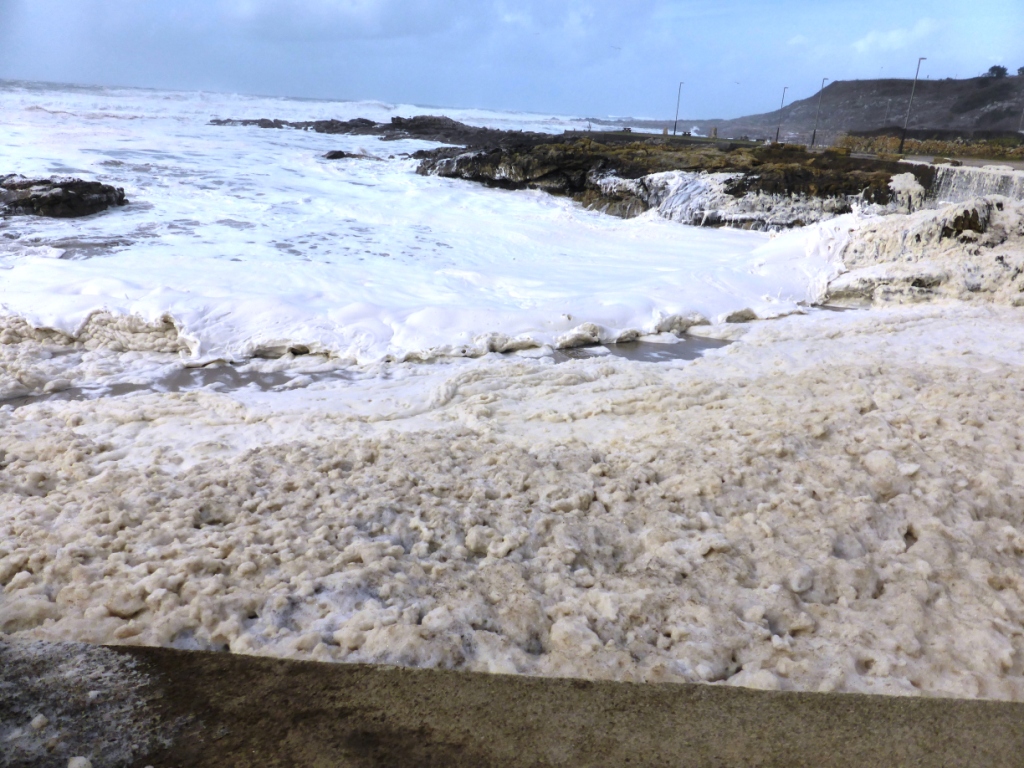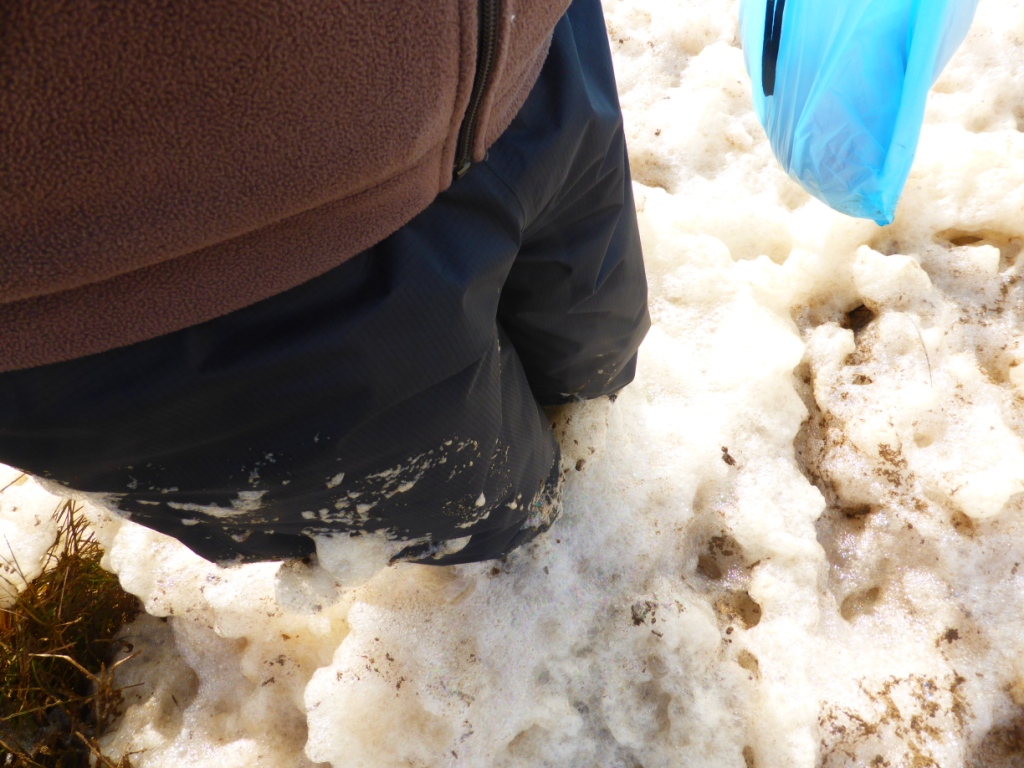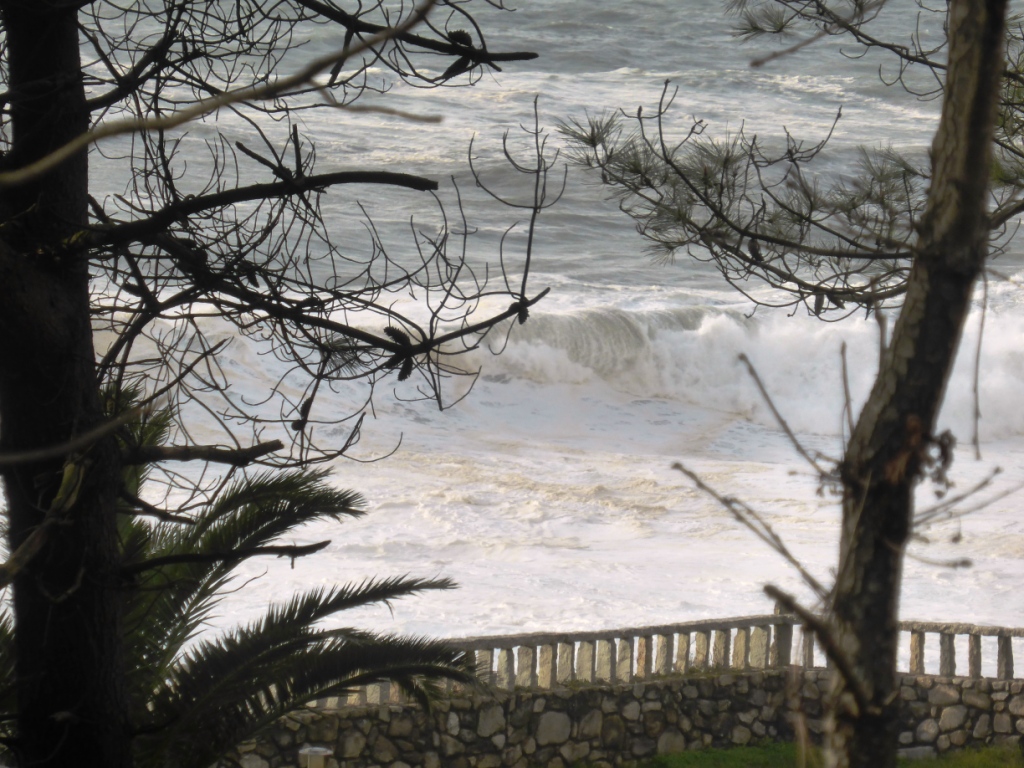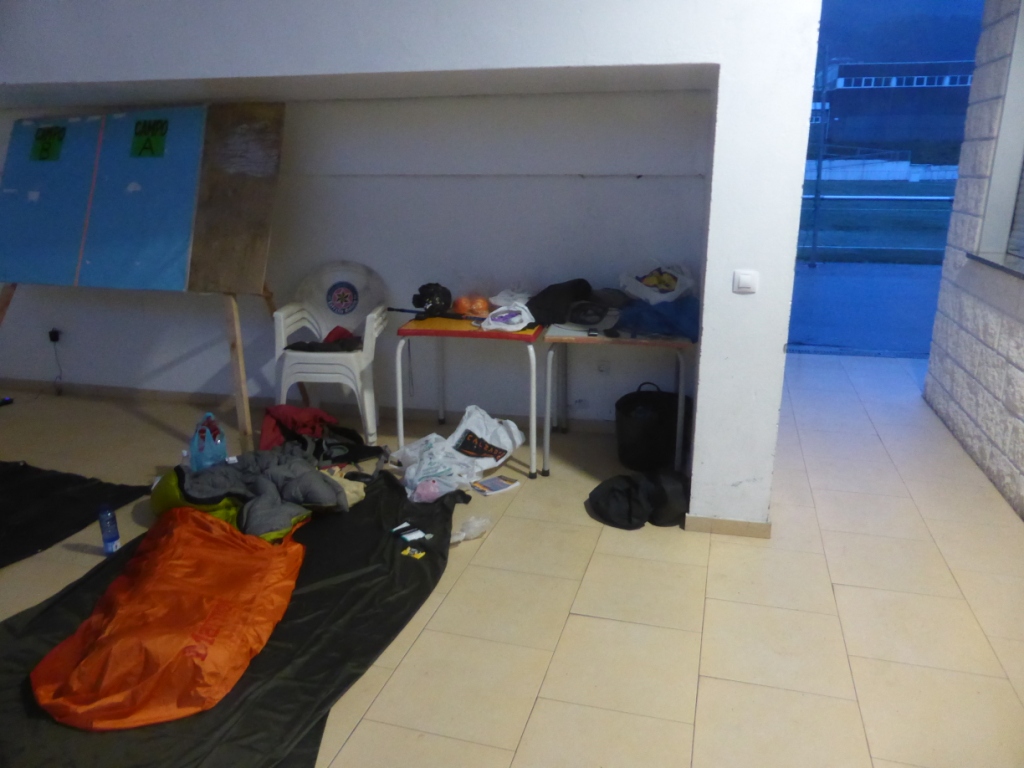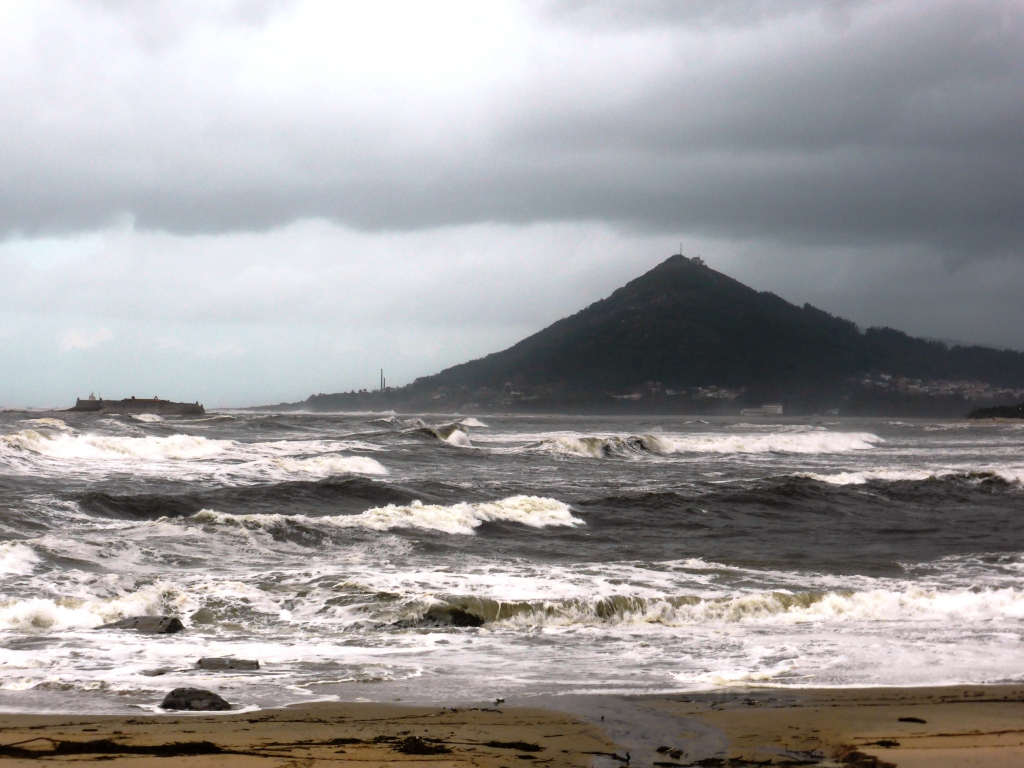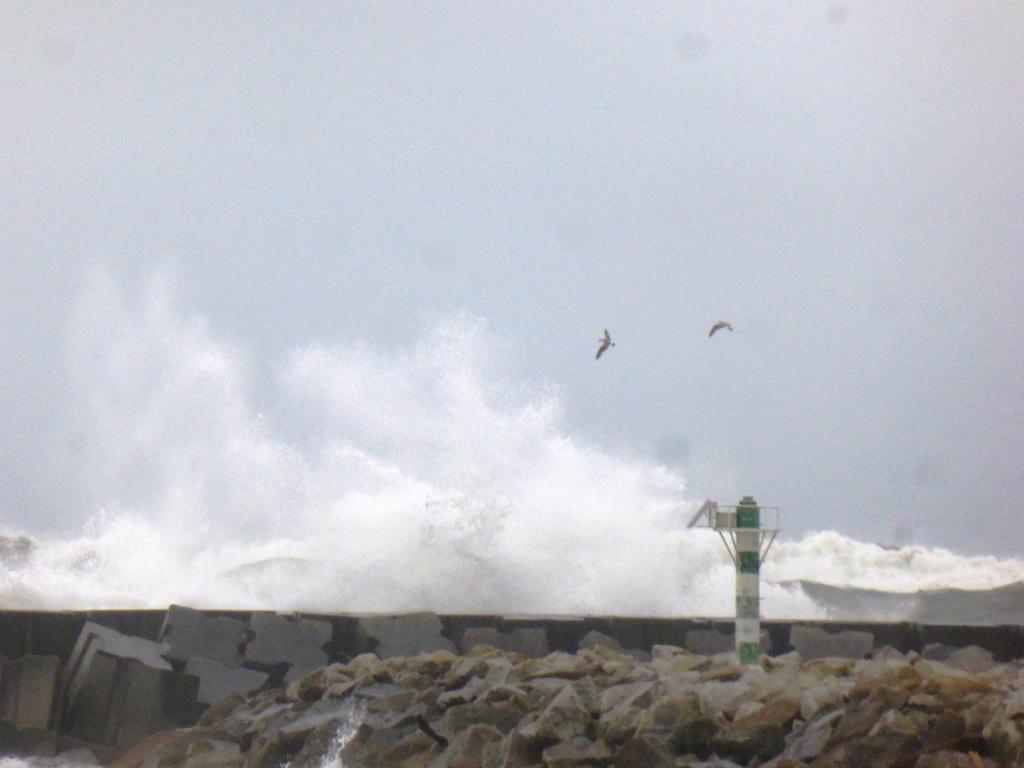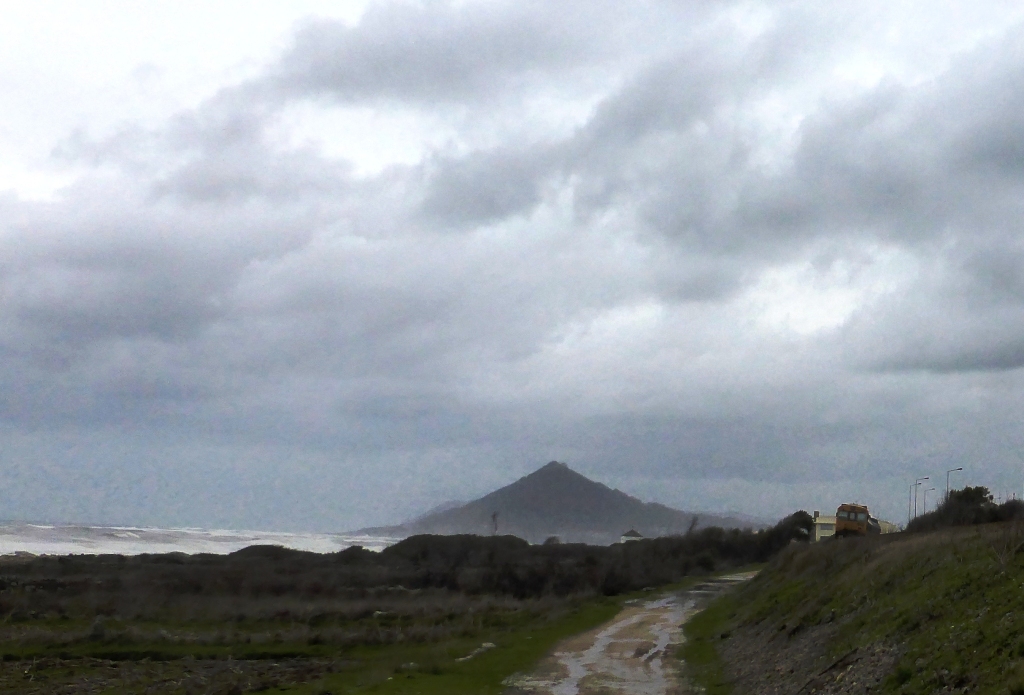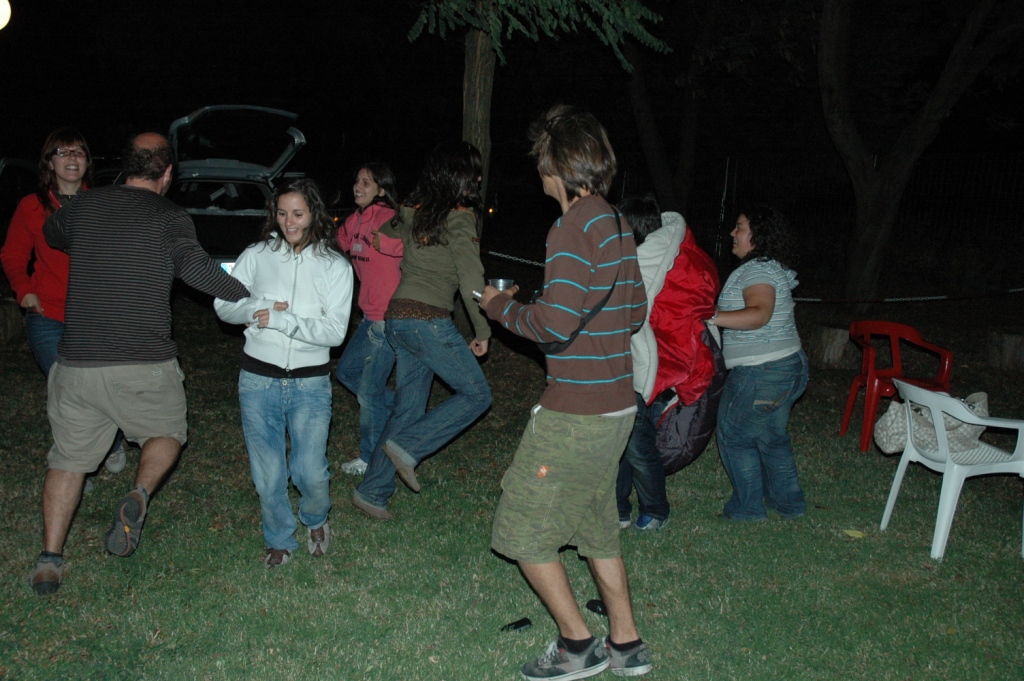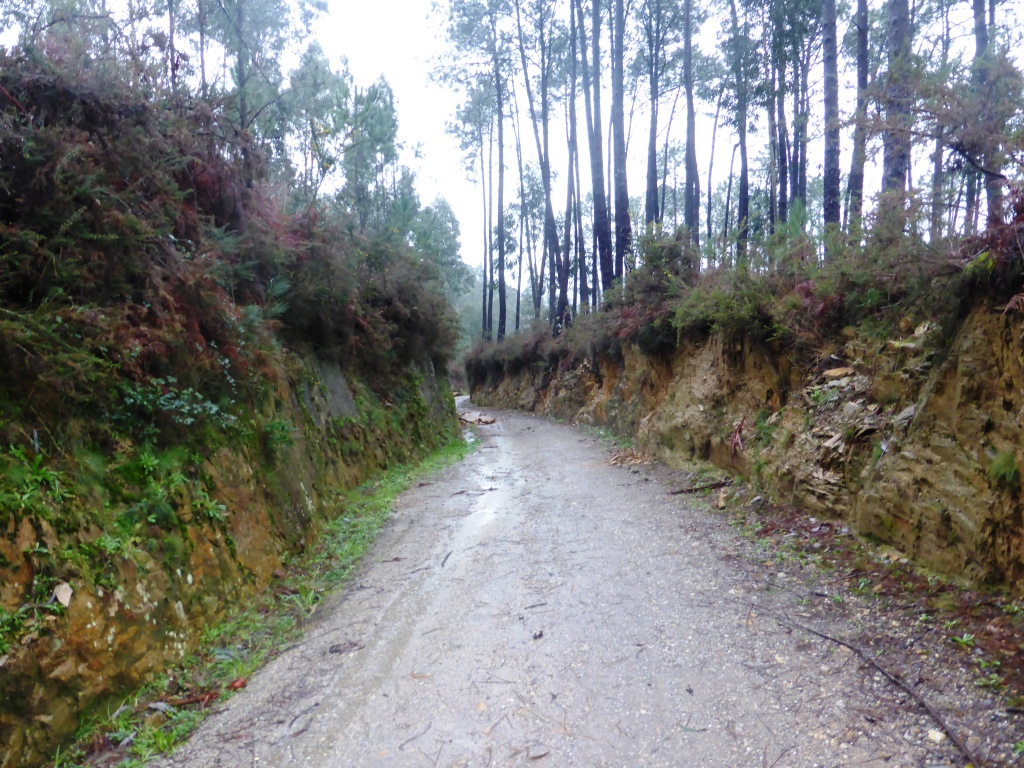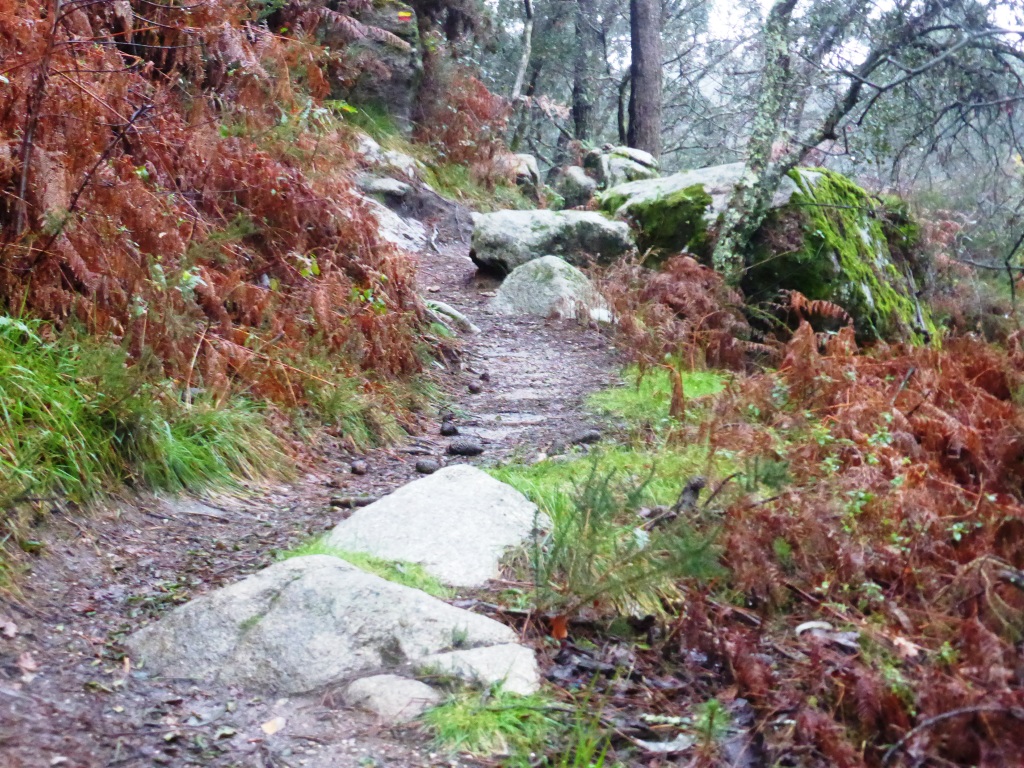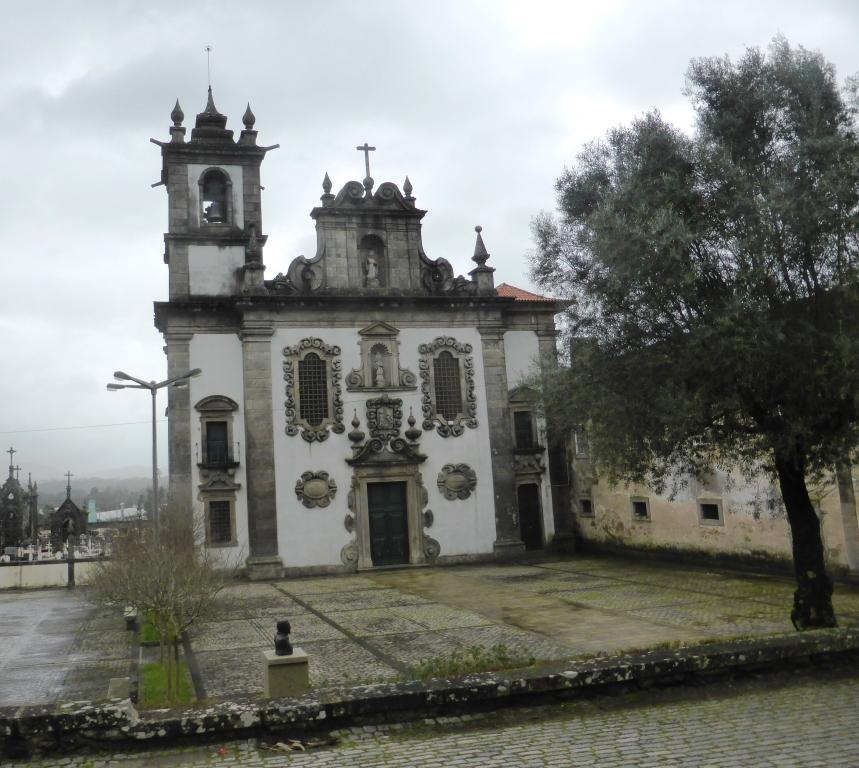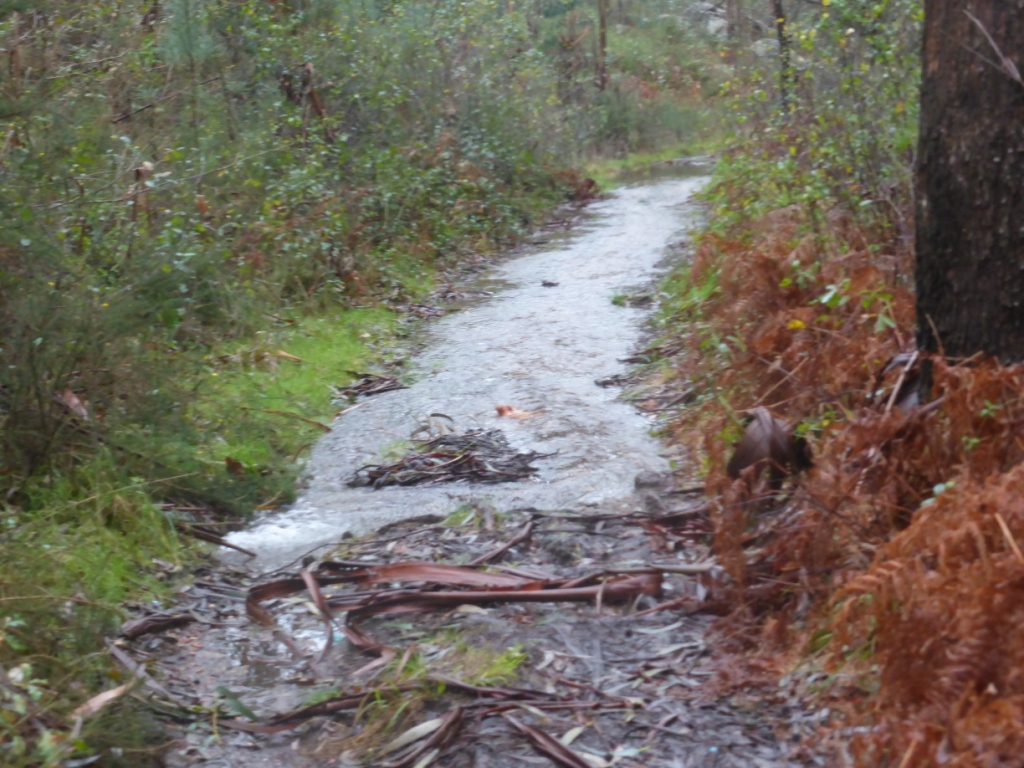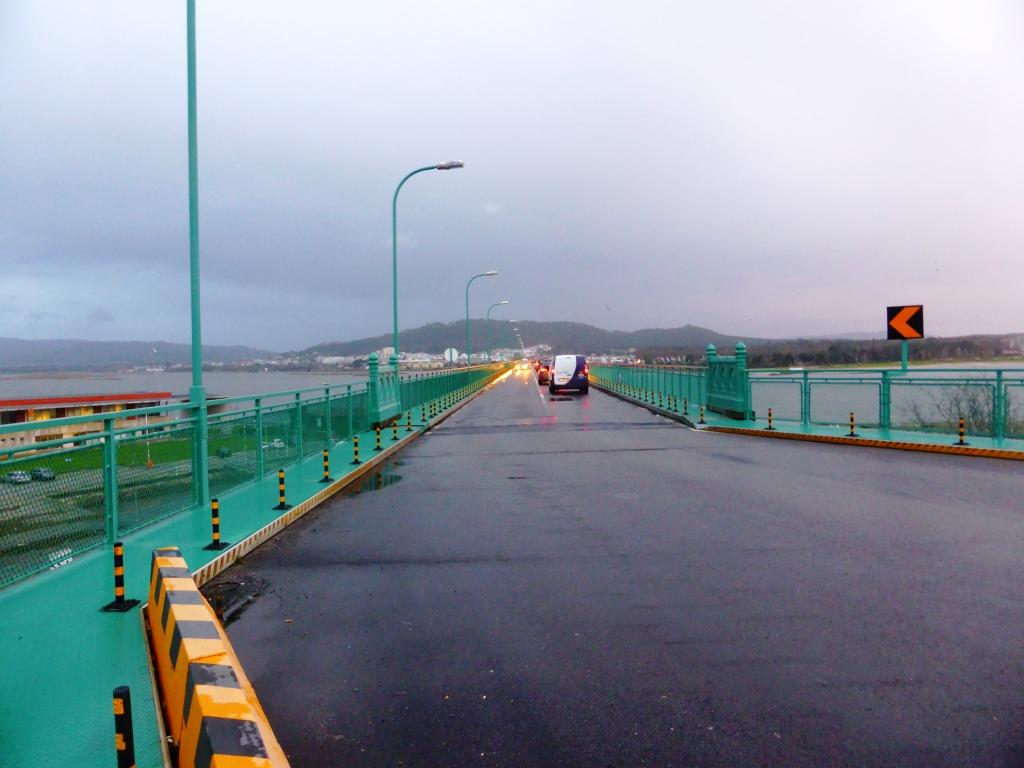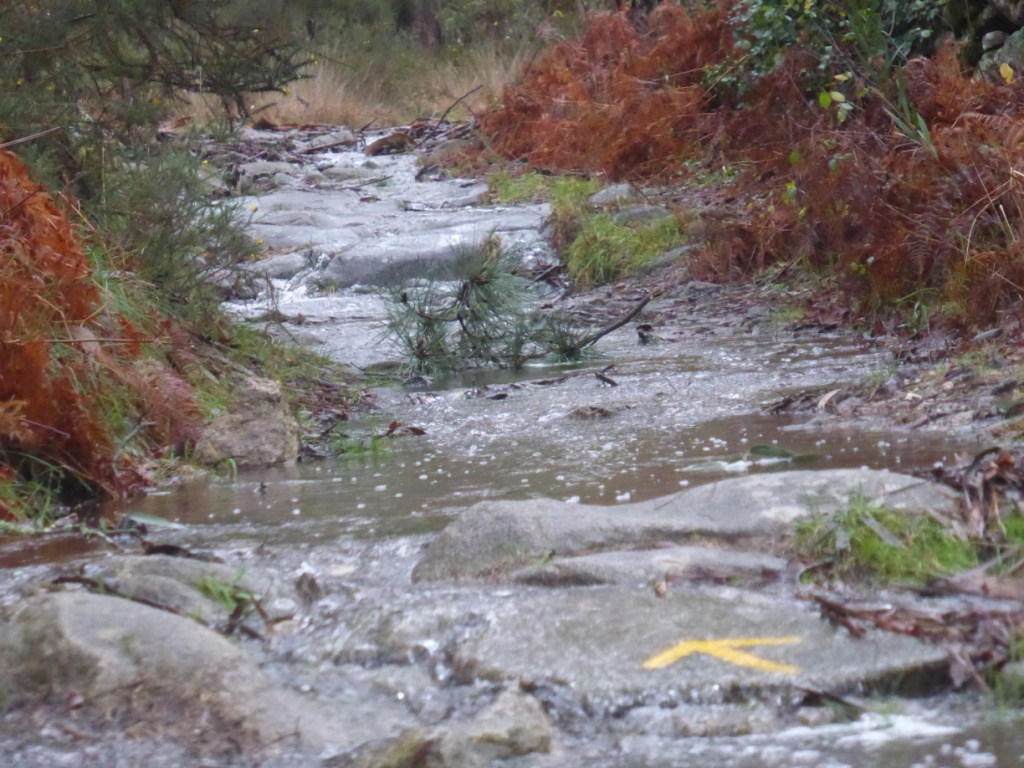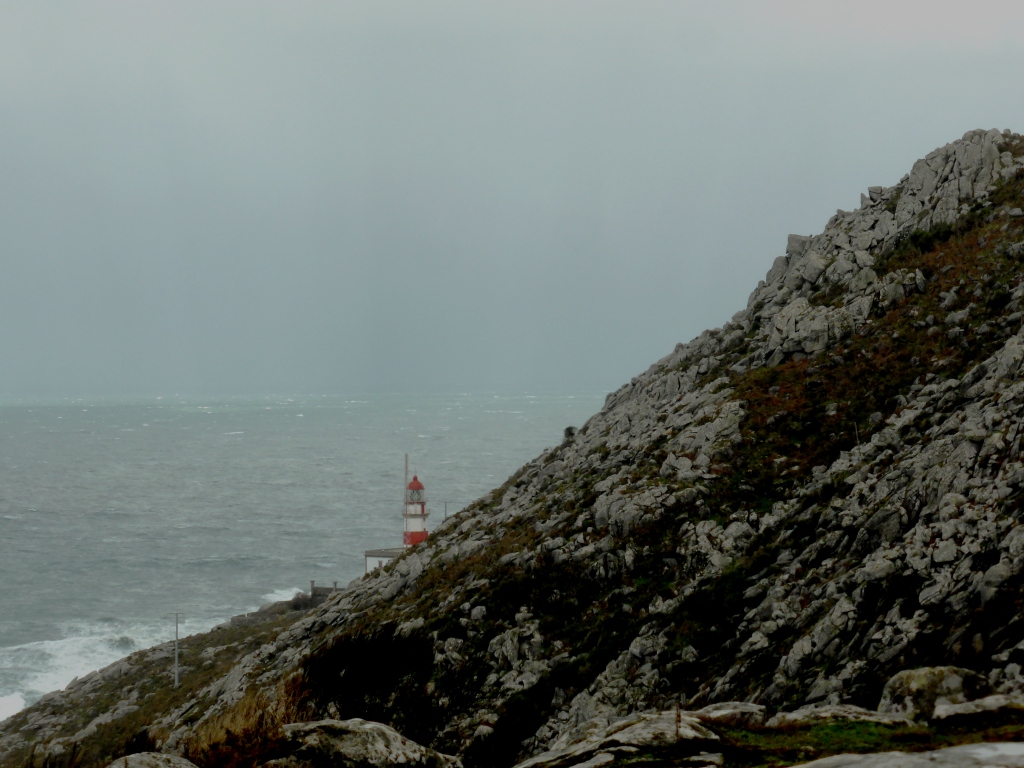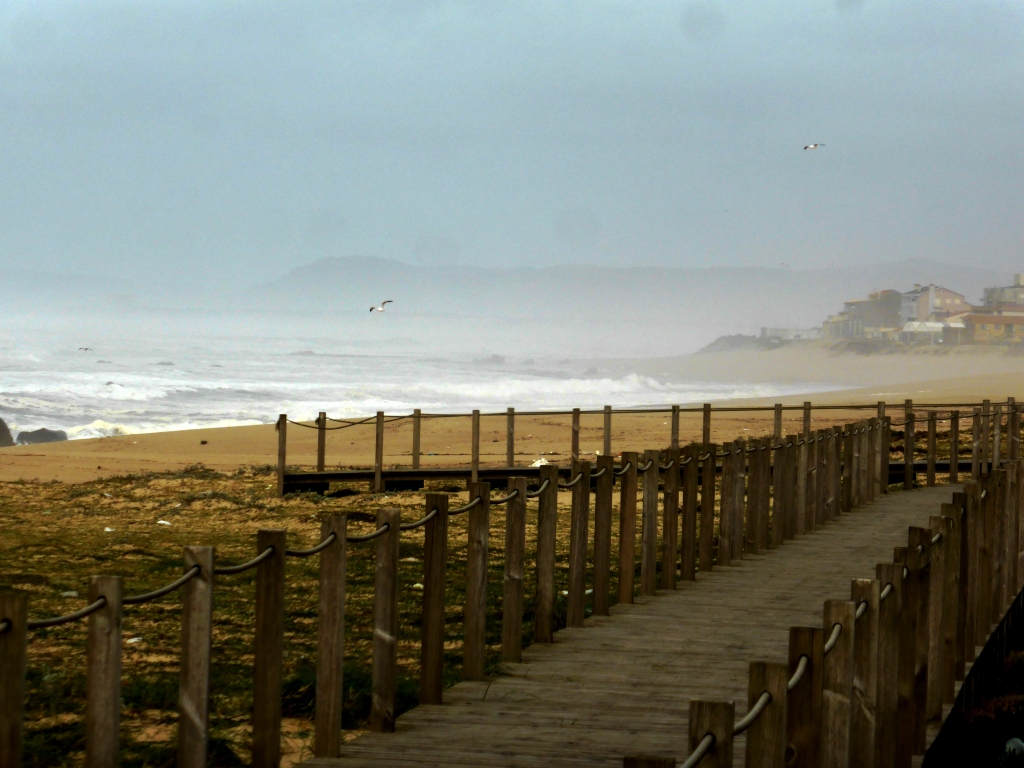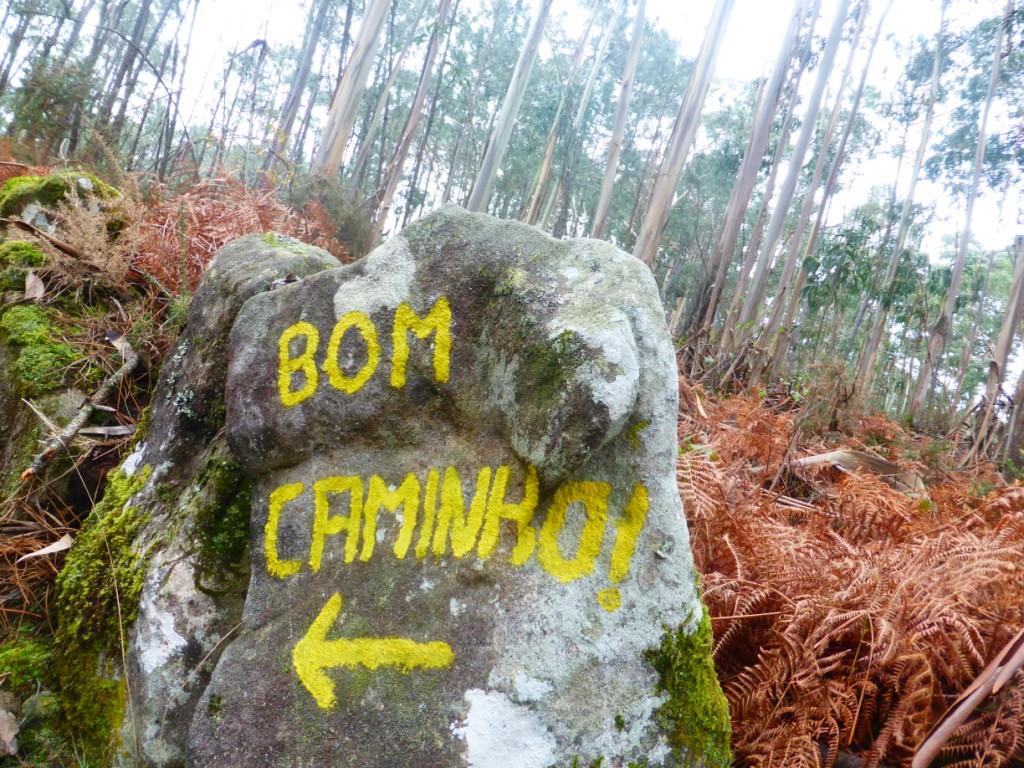An interlude between storms: The Portuguese Way to Santiago by the Coast (3)

Rivers filled up quickly clear and cold.
Viana do Castelo to Vila Praia de Âncora
Respite between Heavy Showers
I left the Youth Hostel in Viana do Castelo well rested. I am always astonished at how effectively a night’s sleep – no matter the quality – restores a weary, aching body. This third morning of my Camino had the additional surprise of being sunny. I drank in the light, rejoicing in the sparkles and reflections in the river as I looked out from the window of my room. My clothes had dried overnight.
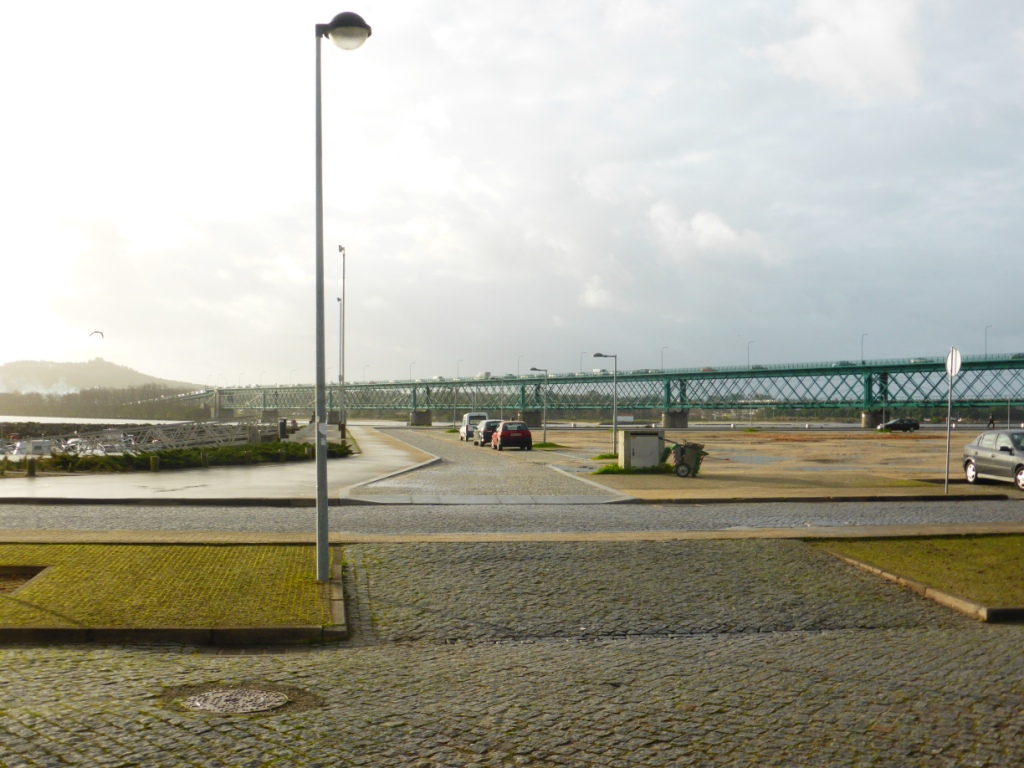
A sunny moment as morning traffic pours over the bridge into Viana.
The almost constant rain of the first two days had helped some blisters to emerge on the top of the toes on my right foot. I treated these with iodine and cotton wool from the first-aid box in the Hostel as I ate some yoghurts for breakfast before setting off, once again at 9.oo am. This is a bit late for a day on the Camino. I like to leave at daybreak and cover a dozen or so kilometres by mid-day. However, on the first days of a Camino I am still adjusting. finding again my natural rhythm. This rhythm is written within me but in “normal” life smothered by the demands of “civilised” society which has a very different clockwork and is less dependent on bodily energy, being carbon-fuel addicted. The simplicity of the Camino allows this inner rhythm, the symphony of body, mind and spirit to find its own harmony through walking, silence and prayer.

Viana station seemed to be planted in the middle of the camino.
I left Viana, failing to follow the yellow arrows, especially around the station. I think I should have walked right through it, or under it. The city is small but my route wound round and round as few roads seemed to go north. None of this helped me get into my stride and I feared that these dry hours were unlikely to last. When I caught sight of the coast with the white of the breaking waves roaring like an airplane breaking on the tarmac I felt as if I had escaped from a prison. The wide horizon was stormy but opened up my lungs and my breathing deeply told me that I had not been recollected on leaving the Youth Hostel: I had been too eager to get on my way, to fix my blisters, to find the camino and had forgotten to enter into a contemplative state, to be just where I was, to be aware that the present, each step, was enough and be conscious of Presence. I’d forgotten to set off with an act of trust in God and a centring of my day. Wide horizons usually awaken me.

Oranges, out of reach, but a sea and a horizon which touch me.
Breathing deeply and walking each step very consciously, I began to relax into the day. This is a very simple Zen exercise I had learned from one of Thich Nhat Hanh’s books “Peace is every step.” I am happy that all religions can rub shoulders today because, although I am Catholic by birth, and know the tradition pretty well ( it is where I belong), my own spiritual path has been much enriched by my encounter with other faiths. Christianity, though, has many depths and I am forever reminded of this in Spain and Portugal by the public religious rituals and symbols found in every locality. No sooner had I gazed over the Atlantic than the path turned down a little lane which skirted a Quinta with an entrance adorned with an image of the crucified Christ looking down upon the souls in Purgatory who appear to have angels helping them to leave, possibly as they had just helped me to leave Viana.

Vivid depiction of Purgatory.
Hell-fire would have been extinguished by the torrential rains of the past days and before I had gone a few more steps the south wind strengthened and began to push me along. The rain fell in huge dollops which, at first, just splat on the ground before learning to bounce. In two hours I had covered 4 km. There was a long way to the next albergue in Caminho on the border with Spain and I knew I had no possibility of making it by nightfall.
Just down from the railway station in Areosa is an Intermarché supermarket in which I sheltered and bought some apples and bread which often keep me going. When the shower passed I set off still relatively dry passing very typical little farmsteads.

Green and grey – a coastal farm.
By mid-day I was soaked through after a 10 minute shower and took refuge in a bar by the station in Carreço where I removed my waterproofs and rearranged the padding on my blisters. Nobody in the bar seemed at all bothered by this first-aid, just a curious glance and then back to the television. We were in the same place but in different worlds.

Bar in Carreço.
Distracted by beauty.
The Camino began to wind through a eucalyptus forest with water spouting from walls and gushing along the path. A bright yellow, “Bom Caminho” lit up the path.

I had forgotten how quickly all my clothes dry out when the rain stops. The gore-tex may let torrential rain in but it also dries out rapidly. Showers are much easier to cope with in a day than continuous rain. The paths which become rivers also dry up within an hour of the rain stopping, giving me intervals in which even my sandals stopped squelching.
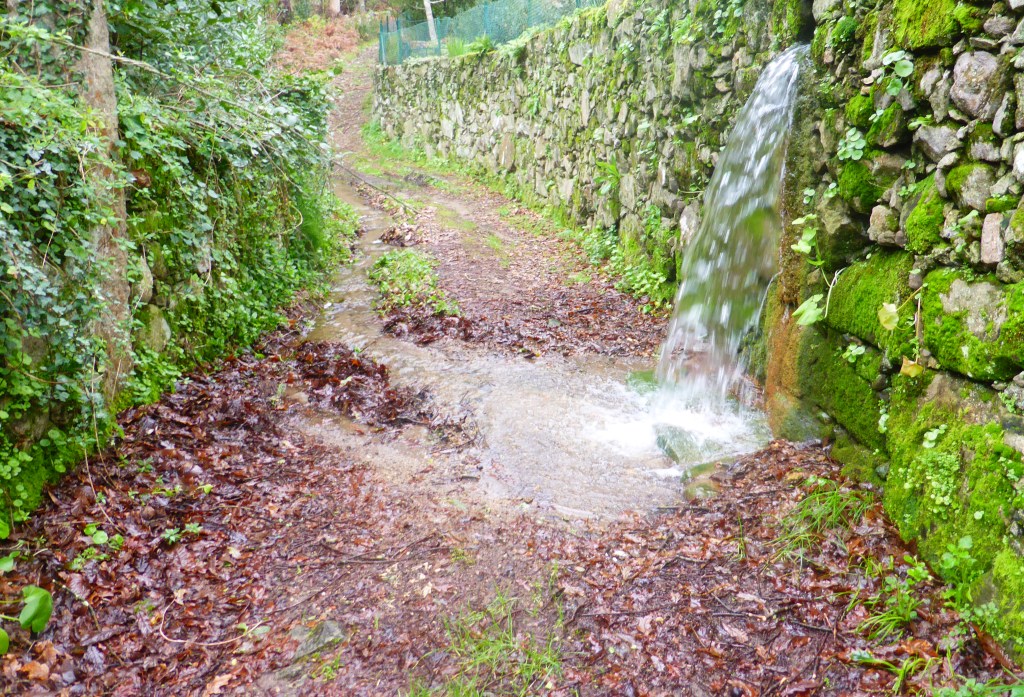
Water pours from a wall.
There are some striking buildings on this stretch. I love the stone of the farms:

Stones witness the passing of pilgrims.
Also the Quintas, Portuguese estates, have a quiet elegance. Often they have their own chapels and ornate ceramic plaques. I tried to imagine them in the summer heat but instead decided I was privileged to be passing them in this time of storms when the greens and browns were glistening wet, which matched my own dampness and still lingers deep within me as an imprint of this camino.
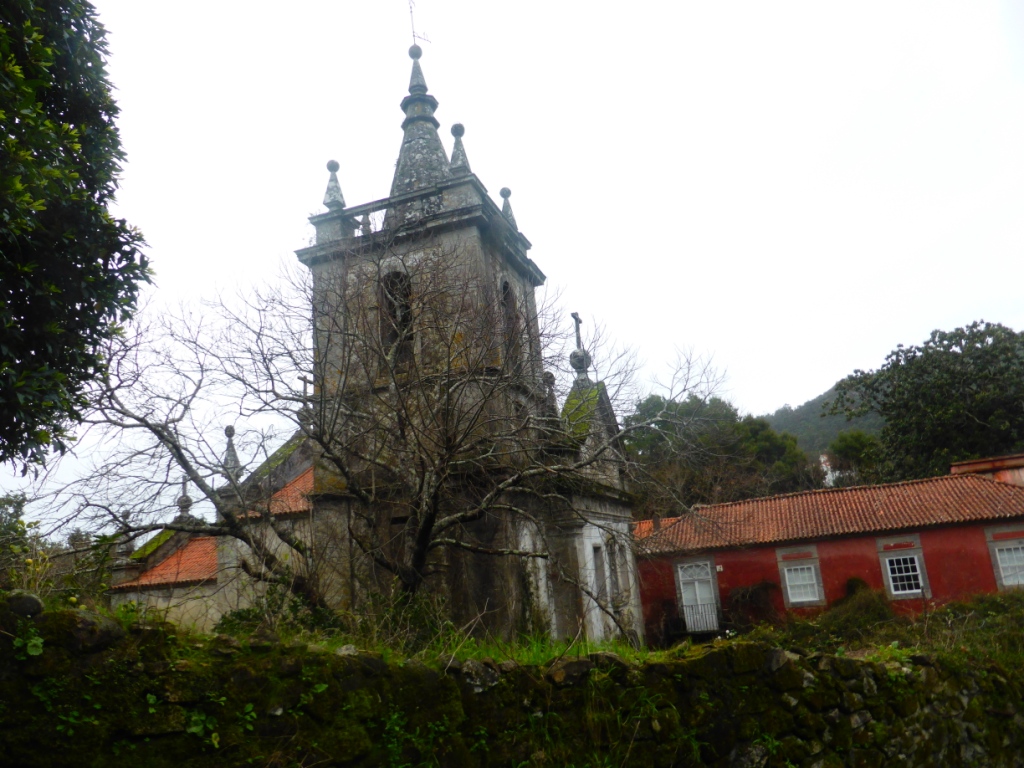
Impressive quinta in Afife Quinta de Cabanas
The rivers swished down rocks enthusiastically and with an energy they lack in summer. All around nature was beginning to move and offer new colours, the first dabs of Spring: mimosa and even primroses.

mimosa the first flowers of spring.
I pass a little mill now converted into a house. The patio chairs are still tilted in place after the summer, unmoved by the fierce winds, awaiting the return of their occupants who may sit there toasting each passing pilgrim with vinho verde. But right now this winter has brought only five dry days out of the past 80.

Former mill near Afife, now a second home.
I have always loved sleeping beside rivers. The constant rush of the waters must remind me of the comfort of my mum’s womb or some such profoundly comfortable moment in life. This little river was particularly cosy, even in between deep Atlantic depressions, tucking its flow among rich evergreens and huge magnolias.

No magnolia in sight in this photo! but there were big ones around.
The Camino skirts the village of Afife through a eucalyptus forest and along a paved path which seems to have been there for centuries. I love how many Caminos pass over Roman roads but these, on the Portuguese coast may be much more recent.
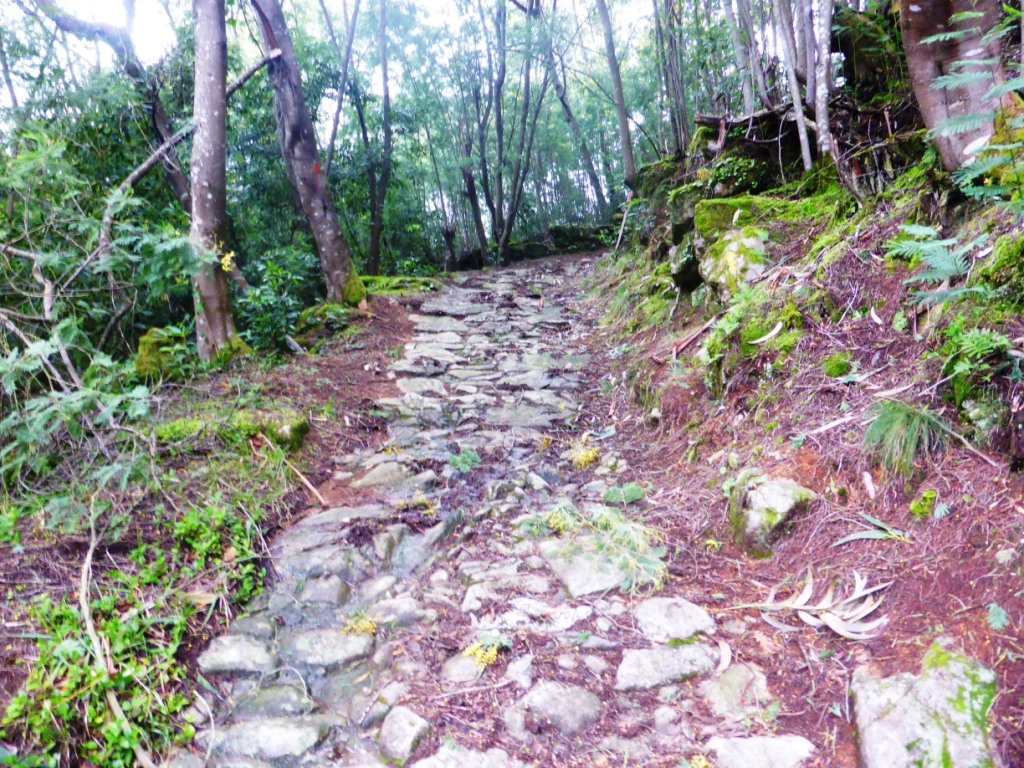
The camino follows an ancient paved path.
At some points it was possible to look down on the sea and all along the path the roar of the breaking waves travelled up from the ocean’s edge. The rain seemed to stop just as it reached the land as if unsure as to what this new element might imply for it. For this I was grateful and rejoiced in walking unimpeded by water.
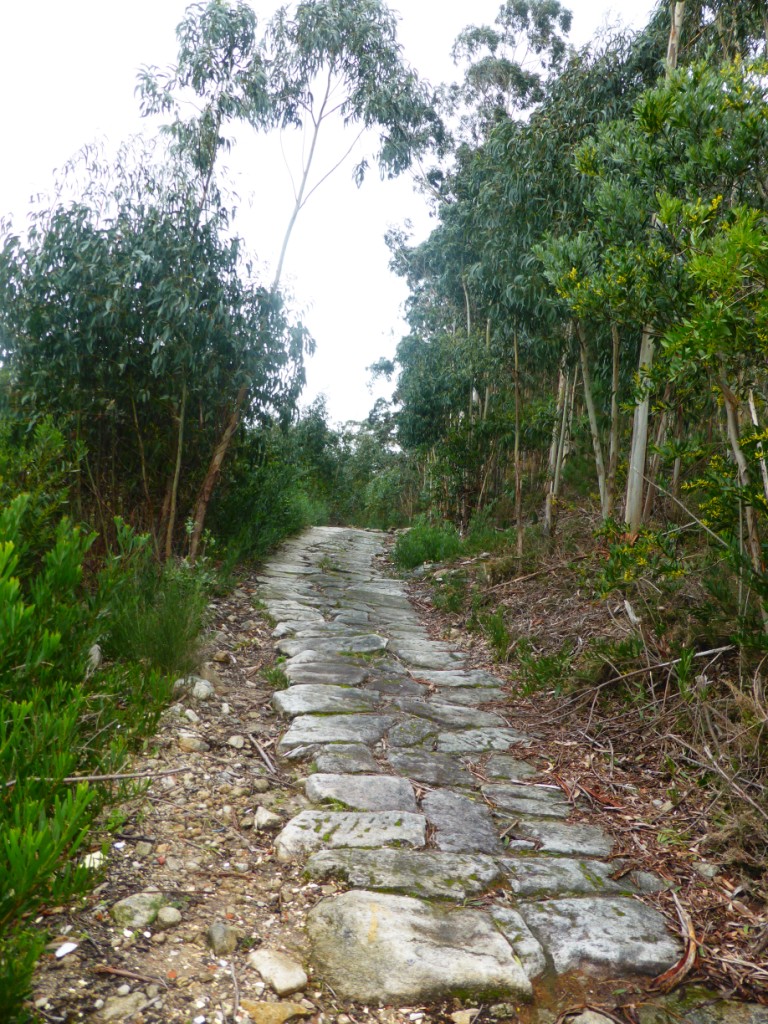
Another stone path Which is too well preserved to be very old.
I admired another stone path and began to find the rhythm I had been seeking at the start of the day where my stride and my heart, my breath and my spirit are one. I remember smelling the eucalyptus when I fell and the falling was unstoppable. I recall being aware that I was going to bang my head and when I hit the stone, just above my right eye I was relieved that I was still conscious and generally unhurt. I had just been finding peace in every step, and aware of it, when I tripped on one of the many small branches which had fallen in the storm.
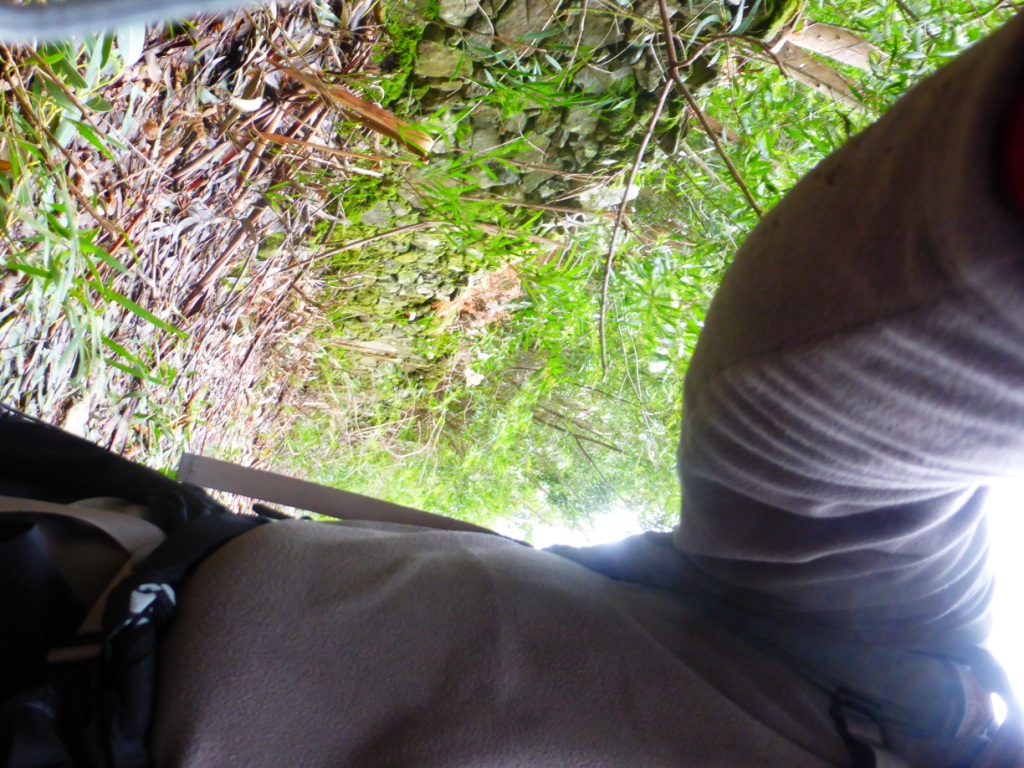
My camera survived the fall. I took this photo before I stood up to see if it still worked.
I was, however, shaken and aware of my vulnerability. [ A good piece on vulnerability in this excellent blog http://teilhard.com/2013/08/30/brene-brown-the-power-of-vulnerability/] As age softens me and aches make me less mobile, as I forget what I am in the middle of saying and need stronger and stronger glasses, I have times when I feel like the little antelope with a limp when the herd is being chased by a lion. Some may think my trust in God is a sign of sanctity: in reality it is a great comfort.
A resting place and a night in a hotel.
The rain became more persistent as the day wore on. Once again the path became a small torrent filling my sandals with gritty sand which was difficult to dislodge with my usual toe-tap on the ground. Also my blisters required re-padding. Then I turned a corner, the rain stopped and before me was a lovely lavoudeiro, one of the places where clothes used to be washed by the local women.
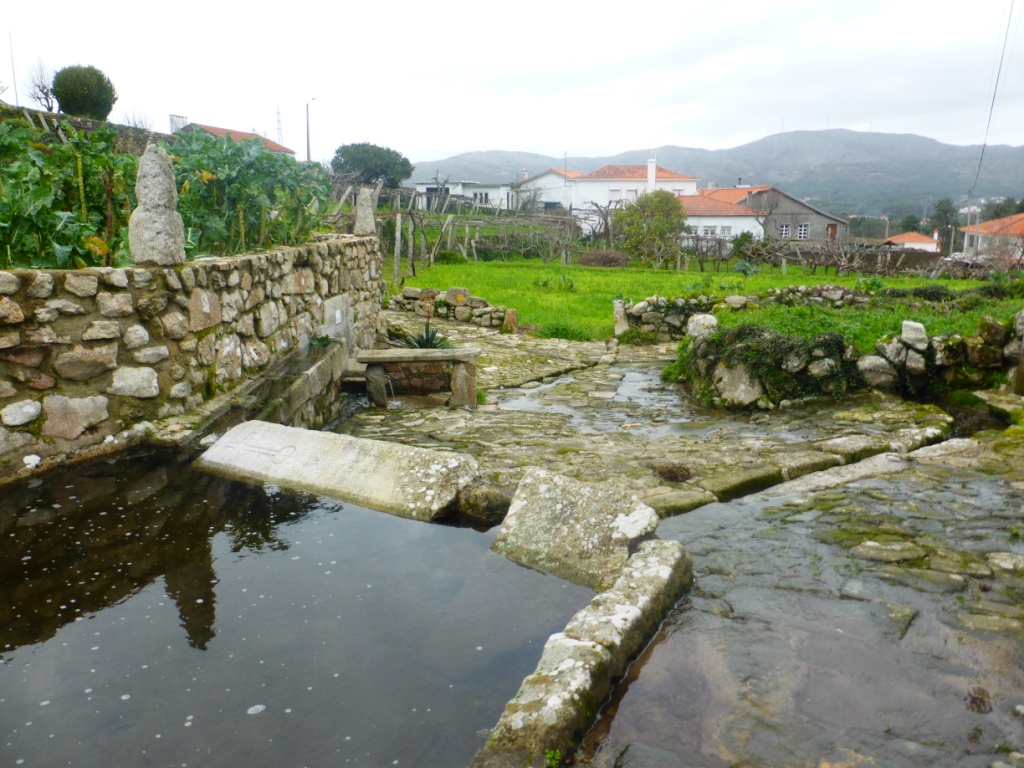
Lavadouro, fonte de Crasto,
Laje/Barreiros
I loved this spot, perhaps because it had a little stone bench and I could treat my feet easily. Possibly I was listening to the conversations of the washer-women from the past as they scrubbed their laundry or that the spring had a sacred Celtic significance, but probably I was just very relieved to sit down after several hours of walking.
As I approached Âncora I saw that another huge downpour was inevitable and on this early February evening the day darkened rapidly. I began to wonder about where to stay the night as the path took me through meadows and over streams.

Rain on its way as I take the Camino around the village of Âncora.
There is a river which separates Âncora from its sea-side beach. The Camino takes a turn which the caminante must heed in spite of the Church straight ahead appearing to be the most direct way to the beach. The river, however, has no crossing point at the church and the deviation is by an attractive little path to an old bridge.
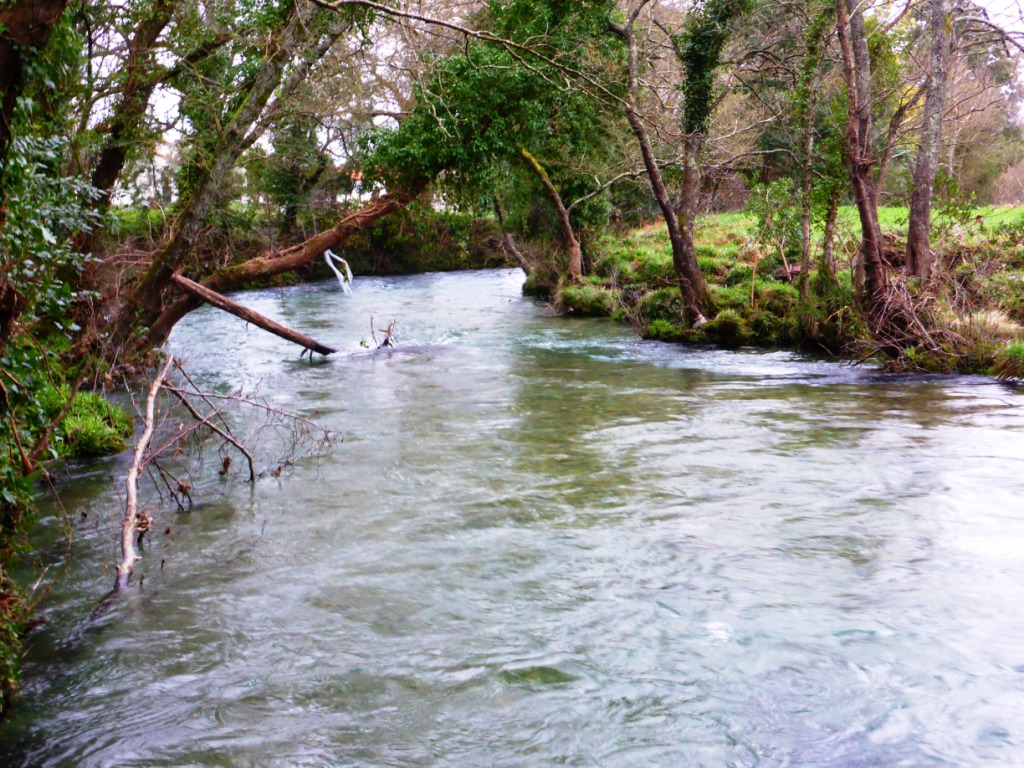
The river in Âncora
When the rain started I realised I could go no further and dodged into a local shop to ask where I might find a room for the night. It was a Chinese Bazaar and when I asked if they knew where I might get a bed for the night I was taken through the shop and offered a huge inflatable bed for only 10 euros. I decided to navigate to the sea-front prepared to pay whatever I had to for a place to shelter and to sleep. The first I spotted was the Albergeria Quim Barreiros and that did just fine although it was costly. The room had all that was needed to dry out and, moreover, a fine sea view.

After the storm: Morning view from my room in the Albergueria in Vila de Praia de Âncora.
I had a television but 10 minutes zapping was sufficient to glean that the next storm would pass by that very night. And it did. I broke a bit of bread, ate two apples, showered and went to sleep leaving the sea and the rain to sort out their battle.


